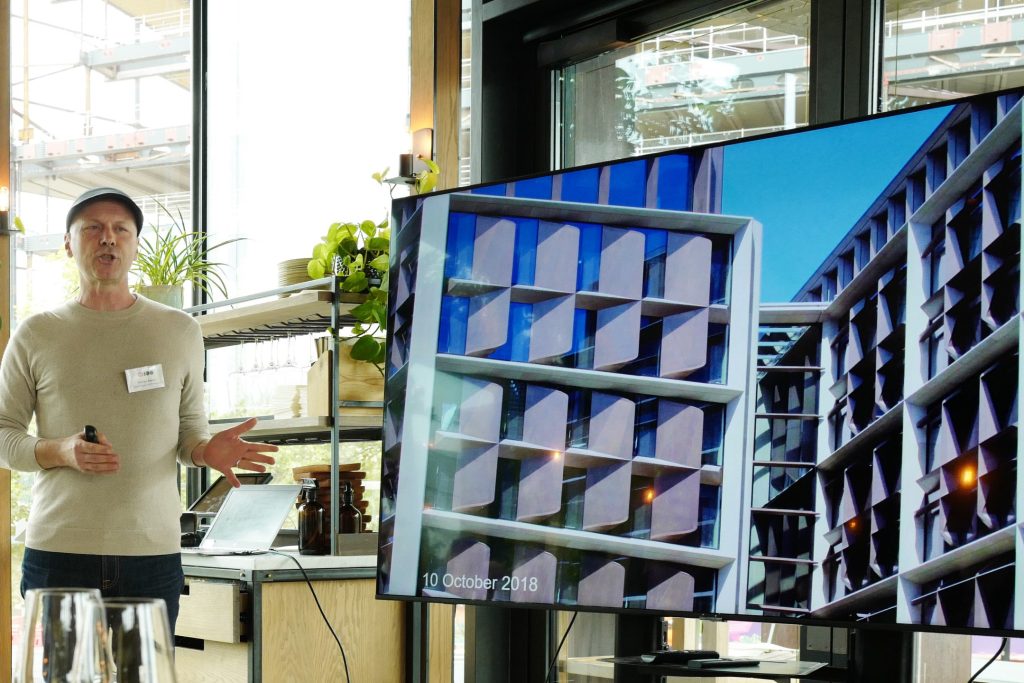Speaking at an AJ100 Club lunch event last week, Pawlyn advocated for the profession to adopt biomimicry and regenerative design, saying that the Bloomberg building proved that architects’ current conception of sustainability was not good enough.
Pawlyn acknowledged that ‘in many ways’ the low-rise City of London office block ‘is a very good building’ as it features ‘many good innovations’. But he said the project still contributed to climate breakdown – and was merely less bad than other contemporary buildings.
Back in 2018, the Bloomberg building, which achieved BREEAM Outstanding, was criticised by the Stirling Prize jury’s own sustainability adviser, Simon Sturgis, because of its heavyweight construction and high embodied carbon content.
Pawlyn said: ‘By the architects’ own admission, if all new buildings were built this way, this would result in 3°C temperature rise, which would be more than enough to submerge a lot of low-lying parts of the world, and make large areas in the tropics uninhabitable.
‘[The Bloomberg building] was designed by an internationally famous architect, it had a wealthy philanthropic client, it claimed to be the most sustainable office building ever, with the highest BREAAM rating ever. The conclusion that you can draw from this is that, if this is the best we can do within a sustainability paradigm, then we need to do some urgent rethinking.’
Pawlyn, who is an author and speaker, as well as director at Exploration Architecture, said the project proved the need for regenerative design – the process of designing buildings that restore their own sources of material and energy.
‘What we have to do is to begin to integrate everything we do as humanity into the web of life that supports us,’ he said. ‘And, as a result, one of the best sources of solutions is life itself.
‘James Lovelock and Lynn Margulis’s Gaia theory is pretty important reading for architects and designers. What you find is that Planet Earth evolved into a self-regulating system and has many of the same characteristics as an actual organism.’
Pawlyn pointed out that 96 per cent of all living matter is made from just four elements: carbon, hydrogen, oxygen and nitrogen. He added that the remaining 4 per cent of living matter is made from just a further seven chemical elements.
‘Nature makes everything from a very limited and safe subset of the periodic table and we can learn from that and rethink the kind of things we use. Currently, humanity uses just about every element of the periodic table.
‘There’s also a very good case for making more things from atmospheric carbon. Wood is an obvious example of that. And coral really demonstrates quite powerfully the difference between the way nature makes things and the way humans make things.
‘Concrete manufacturing results in roughly 8 per cent of global greenhouse gas emissions. The nearest thing to that in biology is coral – a large-scale mineral structure, which grows by taking carbon out of its environment.’
Pawlyn also showed guests how nature had inspired his own building designs. These included the material efficiency of abalone shells, which share 90 per cent of the composition of chalk but are 3,000 times stronger; as well as of how spookfish, brittlestars and stone plants distribute light through their organisms.
The AJ100 Club event was held at the Lighterman gastropub in King’s Cross and was hosted by AJ managing editor Will Hurst. The next AJ100 Club event will be held in March 2023.
Foster + Partners was contacted for comment.
